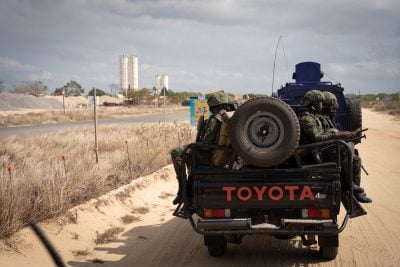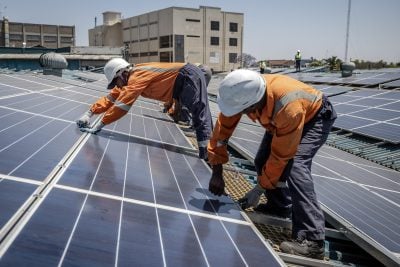When Nigeria’s state-owned power monopoly was broken up and sold in 2013, it was supposed to end the country’s decades of electricity woes. The behemoth had grown clumsy, corrupt and inefficient, and the argument was that it was best to sell it to inject market efficiency into the industry.
The National Electric Power Authority was then carved up into six generation and 11 distribution companies and sold to investors.
The only exception was the Transmission Company of Nigeria (TCN), created out of the ashes of the former monopoly, ostensibly to handle what the government considered to be a sensitive area of the sector but seen by critics as signifying state reluctance to completely give up its grip on the power industry.
Almost a decade later, there has been barely any improvement in Nigeria’s power supply situation. Generation still fluctuates between 4,000 and 6,000 megawatts (MW) despite installed capacity of more than 11,000 MW. Outages remain frequent, forcing a continued dependence on generators to supplement grid power.
Out of 23 gas-powered stations with a joint capacity of more than 10,000 MW, at least 14 were either shut or operating at reduced capacity, TCN said in March to explain the deteriorating power situation.
Two of three hydro power stations are also either closed or operating below par. It’s estimated that Nigerians privately generate as much as 40,000 MW to cover the grid shortfall.
The power generation companies “have attributed this to several factors including poor gas supply, faults in generating units of generating companies, scheduled and unscheduled maintenance, all of which have caused most power generating companies to limit their generation, and sometimes not generate at all,” said TCN spokeswoman Ndidi Mbah. The problems seem to run deeper though.
The ruling All Progressives Congress party alleged, after taking office in 2015, that many of the power companies were sold to political cronies of the former People’s Democratic Party government that lacked the capacity or resources to run the business.
Indeed, many of the distribution companies are still unable to provide metering to consumers and there have been reports of some rejecting electricity allocated to them because they couldn’t pay or lacked the infrastructure to distribute power. In addition, TCN’s transmission infrastructure can only carry about 5,000 MW.
To address the crisis, the Buhari administration signed a $2.3bn contract with Siemens to revamp and expand Nigeria’s transmission capacity progressively to 25,000 MW by 2025. Under an accelerated first phase, Siemens was to increase the capacity to 7,000 MW by the end of 2021, then to 11,000 MW by 2023.
However, the project is still stuck in the front-end engineering stage, amid disagreements with Siemens on aspects of the contract. For example, while Siemens has proposed having 50% of the workforce as Nigerians and total automation of equipment, the government wants 75% of the workforce to be Nigerians and 40% automation, say sources close to the negotiations.
However, power minister Abubakar Aliyu has told reporters the project is on course.
- Race for Buhari’s successor dogged by uncertainties
- Nigeria’s infrastructure projects move forward as elections loom
- Nigerian banks face survival of the fittest in fintech era
Move to renewables
The sector has other problems. At present, 80% of the country’s power comes from plants fired by natural gas fed from pipelines from the southern Niger Delta oil region. These pipelines suffer from frequent attacks and disruptions, creating perennial gas shortages at many plants.
Aliyu acknowledged that Nigeria can only achieve reliable electricity supply by diversifying the sources, especially renewables, which currently only contribute about 13% of national grid power, most of it from hydro generation. It aims to increase its share of renewables to 23% by 2025 and 36% by 2030 and has supported this with a moratorium on import duties for renewable inputs and other tax credits and incentives.
Upcoming electricity projects to meet Nigeria’s dual need for increased supply and a stable grid include the 700 MW Zungeru hydro, which has started test runs, and the planned 3,050 MW Mambilla hydro. Other smaller solar and wind power projects are also on the way.
Devolving management to the states
A possible game-changer may be a change to the way electricity is managed in Nigeria by devolving to the 36 states the power to generate, transmit and distribute their own power. A bill passed by both houses of the national legislature on 1 March seeks to amend the constitution to allow this.
State governors argued in a joint position paper to lawmakers that the current provisions of the amendment don’t go far enough in recognising federal and state governments as equal stakeholders in managing the country’s electricity supply.
“The federal government-controlled and regulated national electricity market today is insolvent, bankrupt and delivers no more than enough to power two 10-watt bulbs a day,” they argued.
The challenge for the country, they said, is to provide Nigerians with the 40,000 MW of power they produce privately “through organised public electricity markets” and save the estimated N17 trillion ($40.9bn) they spent for the purpose in 2021.
The governors’ position reveals the fractured nature of stakeholders in Nigeria’s electricity sector, which include policymakers, consumers, operators, regulators, lawmakers, and federal or state governments, says Eyo Ekpo, a former director at the National Electricity Regulatory Commission.
“It is unlikely the bill will pass in its current form. There has to be a national dialogue before a sensible electricity law passes,” he comments.
Want to continue reading? Subscribe today.
You've read all your free articles for this month! Subscribe now to enjoy full access to our content.
Digital Monthly
£8.00 / month
Receive full unlimited access to our articles, opinions, podcasts and more.
Digital Yearly
£70.00 / year
Our best value offer - save £26 and gain access to all of our digital content for an entire year!
 Sign in with Google
Sign in with Google 



